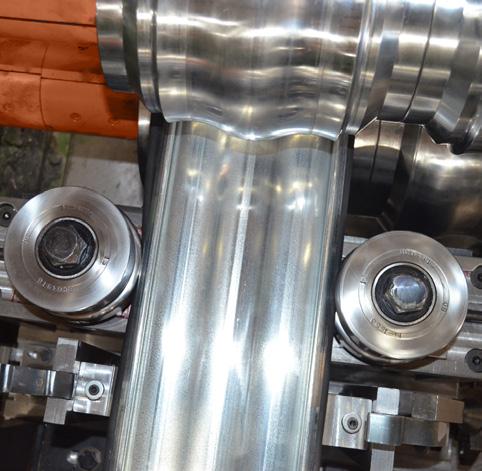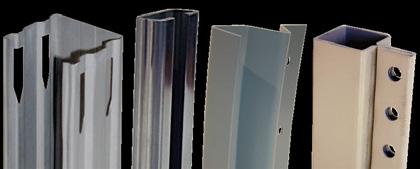
3 minute read
Custom Rollforming Corporation › › › › › › › › › ›
+1.620.345.2821 CUSTOMROLLFORMINGCORP.COM
TAKING YOUR PROJECTS FROM DESIGN TO FABRICATION





CAPABILITIES
• Material Thickness from 30 ga. to 1/2” thick
• Steels: CRS, HRS, HSLA, Aluminum, Copper
• Stainless Steel:
• 200, 300, 400 Series SS, Polished, Hardened
• Pre-Coated Steel:
• Pre-Painted, Galvanized, Galvanneal, Galvalume
• Strip Widths up to 24” wide
• Inline Punching & Notching
• Inline Welding • Rollformed Rings and Ring Segments
• Ten Rollforming Lines
• Maintenance Free Tooling
• Standard Shapes from Existing Tooling
• Simple to Complex Shapes
• Engineering and Design Assistance
Various Secondary Processes Available
The report makes 62 specific recommendations for action by the DOT and related agencies to address these challenges and attempt to bolster the nation’s supply chain. The recommendations cover the whole spectrum of transportation supply chain stakeholders, addressing both very broad and relatively narrow policies. The findings are further separated based on the level of complexity of achieving its goal balanced against the cost of implementation and other corresponding factors. Among the report’s key recommendations are:
› Investing in freight infrastructure, such as ports, bridges, and railroads, to enhance capacity and connectivity;
› Developing inland ports and warehouse locations, as well as investing in the inland waterway system;
› Coordinating with interagency partners to provide temporary solutions to ease port congestion, such as pop-up intermodal yards for containers;
› Providing technical assistance to support the planning and coordination of freight investments and operations and supporting workers employed in this sector;
› Developing and implementing strategies to improve the trucking sector, including ensuring there is truck parking availability consistent with land use and safety considerations;
› Supporting domestic manufacturing, allyshoring and nearshoring efforts; › Improving data and research into supply chain performance, including the tracking of freight and supply chain data, and encouraging the development of state-level freight planning; and
› Urging certain regulatory efforts, such as harmonizing the roles of the Surface Transportation Board,
Federal Maritime Commission, and the DOT.
The DOT’s supply chain report is a wide-ranging plan of action that, if implemented according to all 62 recommendations, would impact the entirety of the transportation supply chain. Secretary Pete Buttigieg reinforced the criticality of the recommendations, noting “decades of underinvestment in our infrastructure, unprecedented consumer demand amid our strong economic recovery, and continued pressure from the pandemic have all put immense strain on our supply chains’’ and “this report lays out critically important steps we can take— both right now, and in the years ahead— to help strengthen our supply chains, create good-paying jobs, and ensure Americans can affordably and efficiently access the goods they rely on.”
The concurrent crises of port congestion, supply chain disruption, and rising consumer product pricing have put considerable pressure on individuals and companies at every touchpoint of the global economy. As the federal government searches for answers to the productivity and resiliency challenges, these recommendations will guide the future actions of the DOT and the Biden Administration. Industry stakeholders will need to pay close attention and consider the potential impacts of the report on their businesses. ■
NATM Issues Retraction for Rear Impact Guard Article
By Alex Stowe, NATM Technical Director
Following publication of the “Rear Impact Guard Updates” article in the May/June 2022 issue of Tracks, the NATM Staff was made aware of an error relating to the section listing out what changes have been made to the Rear Impact Guard legislation.
Numbered items 1 through 3 in the paragraph are correct, however the changes on numbers 4 through 6 were stated incorrectly and should read as follows:
› 4. That the rear impact guard is no more than 560 mm (22 inches) above the ground; › 5. That the rear impact guard is no more than 305 mm (12 inches) forward of the rear extremity of the vehicle;
› 6. That the rear impact guard shall have a cross sectional vertical height of at least 100 mm (4 inches) across its entire width.
NATM apologizes for this error and is issuing this retraction to help ensure the correct information is available for changes made to the rear impact guard legislation. ■










